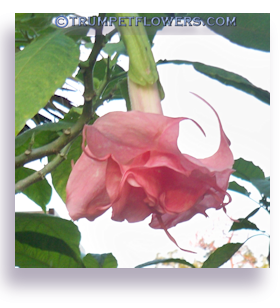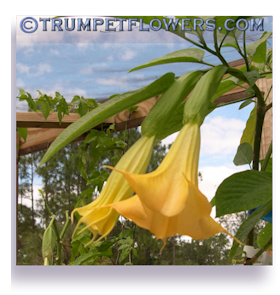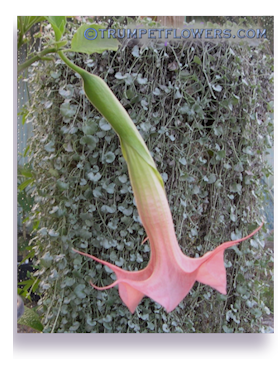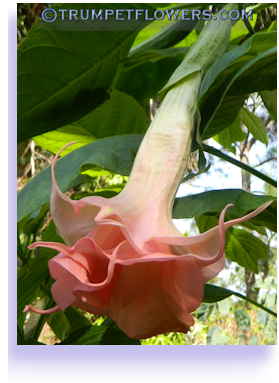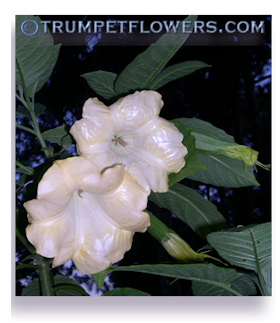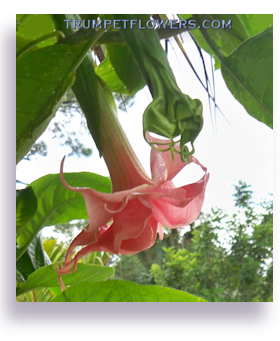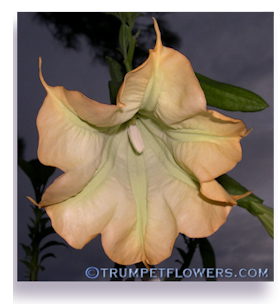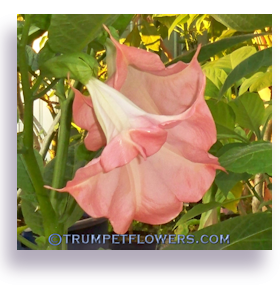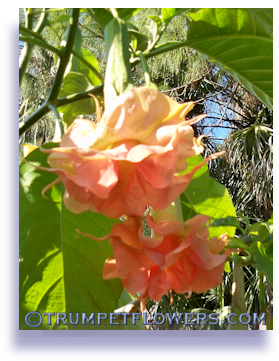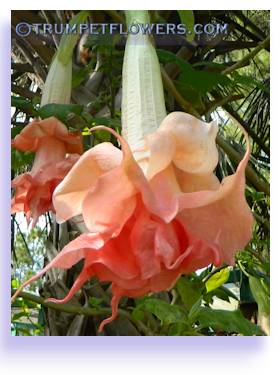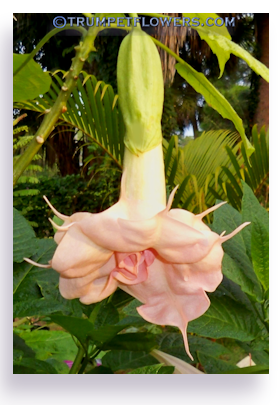Care of Cassia
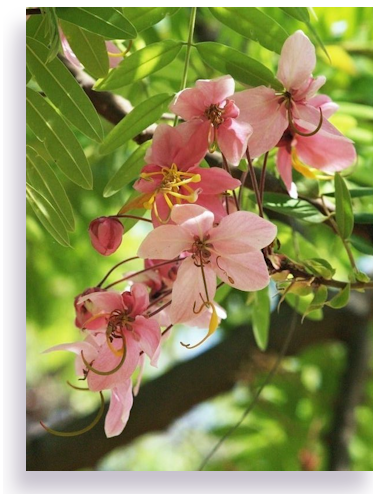 Cassia Grandis is a shapely, lovely small, medium to large canopy tree The size will depend on where and how you cultivate it. with blooms of pink and white that will completely cover the tree when in bloom. In zones 10 and up, where it is hardy, the tree often explodes into flower after the first rains of spring arrive. It can reach 50 feet tall and is a medium to fast growing tree.
Cassia Grandis is a shapely, lovely small, medium to large canopy tree The size will depend on where and how you cultivate it. with blooms of pink and white that will completely cover the tree when in bloom. In zones 10 and up, where it is hardy, the tree often explodes into flower after the first rains of spring arrive. It can reach 50 feet tall and is a medium to fast growing tree.
Cassia javanica reaches a mature height of 30 to 40 foot high with a canopy of 25 to 35 feet. Both of the named cassias are 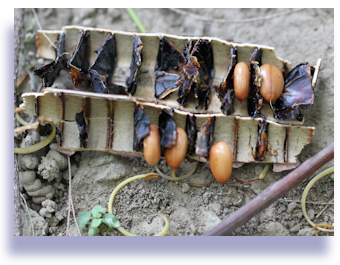 excellent container patio plants, if placed in 22 gallon and up pots. Commonly called the Apple blossom shower tree, or Pink Shower tree. This species is a bit more hardy and can withstand some light frost when the tree reaches a size of about 10 feet or more. It grows readily in zones 9A through 12B. It grows a bit slower than cassia grandis, but the blossoms are just as beautiful. It is known to cross in the wild with Cassia fistula, which will then produce the tree called Cassia X nealie.It typically blooms in late April to early May.
excellent container patio plants, if placed in 22 gallon and up pots. Commonly called the Apple blossom shower tree, or Pink Shower tree. This species is a bit more hardy and can withstand some light frost when the tree reaches a size of about 10 feet or more. It grows readily in zones 9A through 12B. It grows a bit slower than cassia grandis, but the blossoms are just as beautiful. It is known to cross in the wild with Cassia fistula, which will then produce the tree called Cassia X nealie.It typically blooms in late April to early May.
A really pretty cassia can be obtained by crossing cassia fistula with cassia javanica. They then produce what is called the Rainbow Shower tree. The flowers are stunning, hanging in long panicles, and in varying shades of yellows, pinks, and and creamy white∼tones. It is a tropical cross, and cannot tolerate frosts.
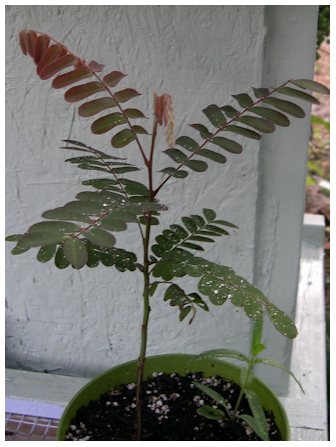 Fresh seeds from the large bean like brown to black (when ripe) pods will ensure that you will get up some seedlings. Soaking the bean like seeds first, in a moist paper towel and placing under the sink a day or two until they sprout speeds up the process. If you can't do that, it will take anywhere from 3 weeks to a month to see them appear on the soil surface. They can also come up in less than a week. I just planted pre∼soaked c. leptophylla seeds on the 21st, and today they are already appearing above the soil. That's 5 days for one year old seed, not bad.
Fresh seeds from the large bean like brown to black (when ripe) pods will ensure that you will get up some seedlings. Soaking the bean like seeds first, in a moist paper towel and placing under the sink a day or two until they sprout speeds up the process. If you can't do that, it will take anywhere from 3 weeks to a month to see them appear on the soil surface. They can also come up in less than a week. I just planted pre∼soaked c. leptophylla seeds on the 21st, and today they are already appearing above the soil. That's 5 days for one year old seed, not bad.
My seed of both were not treated, and germinated in one month. Down here in south Florida, I start most of my seed and cuttings in the cooler temps, as summers here are too brutal on young growth. The seed mix used was a regular MiracleGro seed starting soil mix.
Here is a similar way to begin with seeds. It is a method I use on bauhinia. Cassia seeds are a bit different, so instead of clipping them with nail clippers, file them with an emery board. The rest is the same. Getting Seeds Started
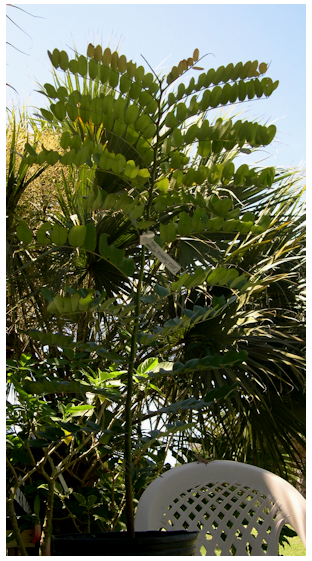 After they are up, water carefully for another month with no fertilizer additives. After that, make sure to give it 1/2 strength fert every two weeks for the next 3 months. By then, the seedling should be ready to transfer to a larger pot. The picture above shows the seedling already in it's second pot. Within the next 2 months, I will repot it again. During the entire time, make sure the plant receives ample sunlight, but protection from the strongest sunlight of the day.
After they are up, water carefully for another month with no fertilizer additives. After that, make sure to give it 1/2 strength fert every two weeks for the next 3 months. By then, the seedling should be ready to transfer to a larger pot. The picture above shows the seedling already in it's second pot. Within the next 2 months, I will repot it again. During the entire time, make sure the plant receives ample sunlight, but protection from the strongest sunlight of the day.
Although a beautiful butterfly, the cloudless sulphurs can overwhelm a small seedling like the one shown here. Although I butterfly garden, when the plants are young they cannot support the voracious chewing of the caterpillars, so I sadly have to pluck them off. After the cassia begins to make side branches, and reaches a height of 8 or so feet (about a year and a half for me) it is strong enough to let the butterflies share in the use of the tree. Remember, the tree belongs to them too. By this time I have placed it in the ground so the taproot can find our underground water source.
If you live in a zone where the plant can be placed out in the ground, let it grow on in containers of graduating sizes for abut a year. Then give it a place with 3 to 4 inches of good, rich topsoil, full sun to partial afternoon shade, and away from buildings by at least 25 feet.Make sure it is in a place protected from high winds, as some branches may get as long as 20 or so feet and can become brittle and break off. 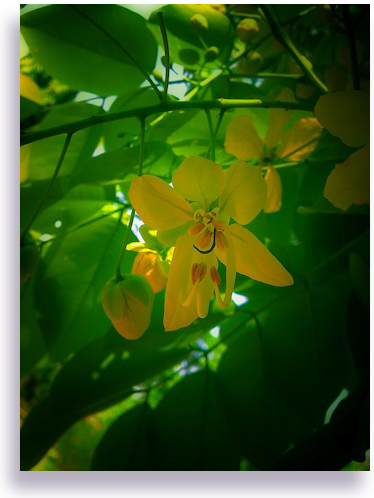 Remember to look overhead for powerlines too. Plant as any other, giving it a twice than larger sized hole and twice as deep. Mix the native soil in by 50 percent, and water well every other day for the first 6 months. Spring plantings are best if you want to take advantage of the coming rainy season. Otherwise plant out in fall and water less until spring. Give the young plant a fertilizer spike in spring. A it matures, the young tree will use more spikes depending on the canopy width.
Remember to look overhead for powerlines too. Plant as any other, giving it a twice than larger sized hole and twice as deep. Mix the native soil in by 50 percent, and water well every other day for the first 6 months. Spring plantings are best if you want to take advantage of the coming rainy season. Otherwise plant out in fall and water less until spring. Give the young plant a fertilizer spike in spring. A it matures, the young tree will use more spikes depending on the canopy width.
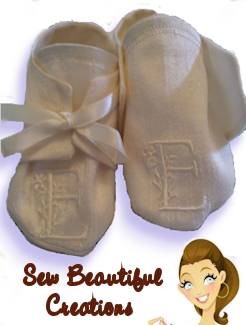 If you plan on keeping the tree as a container grown plant, treat as you would others like it, making sure to give it sun and fertilizer during it's growing season. The tree can be trimmed if needed. Graduate pot sizes until it reaches maturity. You can take up the practice of trimming the root ball to keep the tree managable. Here is the way to pot up cassia and prune it too: Repotting and Pruning. I wrote that for brugmansia, but it works just as well for cassia. You cannot bury the trunk, as the illustration is only for brugmansia. Most cassia get too large for container growing without cutting the taproot, which is risky but can be done. Here is the way to do it if you want to try and grow it as a container tree. Train Bauhinia as a Patio Plant. I have done this to both cassia and bauhinia with success.
If you plan on keeping the tree as a container grown plant, treat as you would others like it, making sure to give it sun and fertilizer during it's growing season. The tree can be trimmed if needed. Graduate pot sizes until it reaches maturity. You can take up the practice of trimming the root ball to keep the tree managable. Here is the way to pot up cassia and prune it too: Repotting and Pruning. I wrote that for brugmansia, but it works just as well for cassia. You cannot bury the trunk, as the illustration is only for brugmansia. Most cassia get too large for container growing without cutting the taproot, which is risky but can be done. Here is the way to do it if you want to try and grow it as a container tree. Train Bauhinia as a Patio Plant. I have done this to both cassia and bauhinia with success.
Cassia will produce a fast growing taproot, so if you are planning on placing it in the ground, do it within a year or two, repotting several times, so that you don't damage the tap root. I left one in the pot too long before planting out, (3 years) and although the plant still lives, it has stunted it's growth height. Perhaps it will catch up, I have yet to find out.
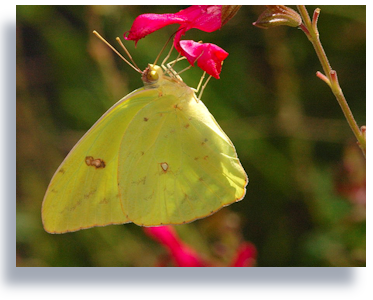 Butterflies (lepidoptera) order are known to use cassia species for their larvae (caterpillars). Two that I know of in the New World are Two∼barred Flasher (Astraptes fulgerator) and the Cloudless Sulphur (Phoebis sennae). Sulphur females dart in and out of leaves in an excited fashion, laying an egg here and there. The caterpillars can be either green or yellow, with small markings. If you like butterflies, and your tree is large enough to support the caterpillars chewing on a few leaves, do not use any chemicals on the cassia.
Butterflies (lepidoptera) order are known to use cassia species for their larvae (caterpillars). Two that I know of in the New World are Two∼barred Flasher (Astraptes fulgerator) and the Cloudless Sulphur (Phoebis sennae). Sulphur females dart in and out of leaves in an excited fashion, laying an egg here and there. The caterpillars can be either green or yellow, with small markings. If you like butterflies, and your tree is large enough to support the caterpillars chewing on a few leaves, do not use any chemicals on the cassia.
Every now and then, in summer months, you may also find small, perfectly cut out circles on a few of the leaves. These are made by a ground dwelling bee, very beautiful indeed. Please don't attempt to eradicate them, they are harmless, good for the environment, and will not damage the plants. The bees use the cuttings to line the tunnel into their burrow. The leaves grow back, and the bees never take enough to threaten the plant in any way, even if it is young.
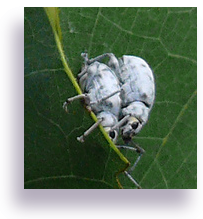 One pest I have found hiding under the leaves, is the dreaded weevil, shown in the picture. This pest brings diseases, and stunts usually the top growth. Pick it off by hand, and cut them in half with your fingernails. There are usually not enough to warrant spraying, which could potentially hurt good insects, like spiders and butterfly larvae.
One pest I have found hiding under the leaves, is the dreaded weevil, shown in the picture. This pest brings diseases, and stunts usually the top growth. Pick it off by hand, and cut them in half with your fingernails. There are usually not enough to warrant spraying, which could potentially hurt good insects, like spiders and butterfly larvae.
I have more information on weevils and their pestulous larvae, lifecycle here.
I order all of my cassia seed from TradeWinds Fruit Store.
- Cassia Taxonomy
- Order; Fabales
- Genus; Fabaceae
- Subfamily; Caesalpiniodeae
- Tribe; Cassieae
- Subtribe; Cassieae
- Species; To list a few, c. bakeriana, c. closiana, c. didymobotrya, c. excelsa, c. fistula, c. fruticosa, c. grandis, c. roxburghii, c. venusta, c. marginata, c. javanica,
Species∼Hardiness
- Cassia angustifolia; zone 9B, light frosts
- Cassia bahamensis; zone 10, no frost tolerance
- Cassia Bakeriana; zone 9, 25°
- Cassia closiana; zone 9, 22° to 25°
- Cassia didymobotrya; zone 9B, light frosts
- Cassia excelsa; zone 9, 22° to 25°
- Cassia fistula; zone 9, 20° to 24°
- Cassia fruticosa; zone 9, 22° to 25°
- Cassia grandis; zone 10, no frost tolerance
- Cassia javanica; zone 9
- Cassia leptophylla; zone 9, 25°
- Cassia marginata; zone 10
- Cassia marilandica; zone 8, frost hardy American Senna
- Cassia nodosa; zone 10
- Cassia nemophila; 8B
- Cassia roxburghii; zone 10, no frost tolerance
Tags: care and grow cassia, grow cassia, cassia, senna, golden shower tree, popcorn tree, apple blossom tree, candlestick tree, cassia bakeriana, dwarf pink shower tree, cassia closiana, golden cassia, cassia didymobotrya, popcorn cassia, cassia excelsa, crown of gold tree, cassia leptophylla, Gold Medallion Tree, cassia fistula, cassia fruticosa, cassia grandis, cassia roxburghii, cassia venusta, cassia marginata, cassia javanica,

